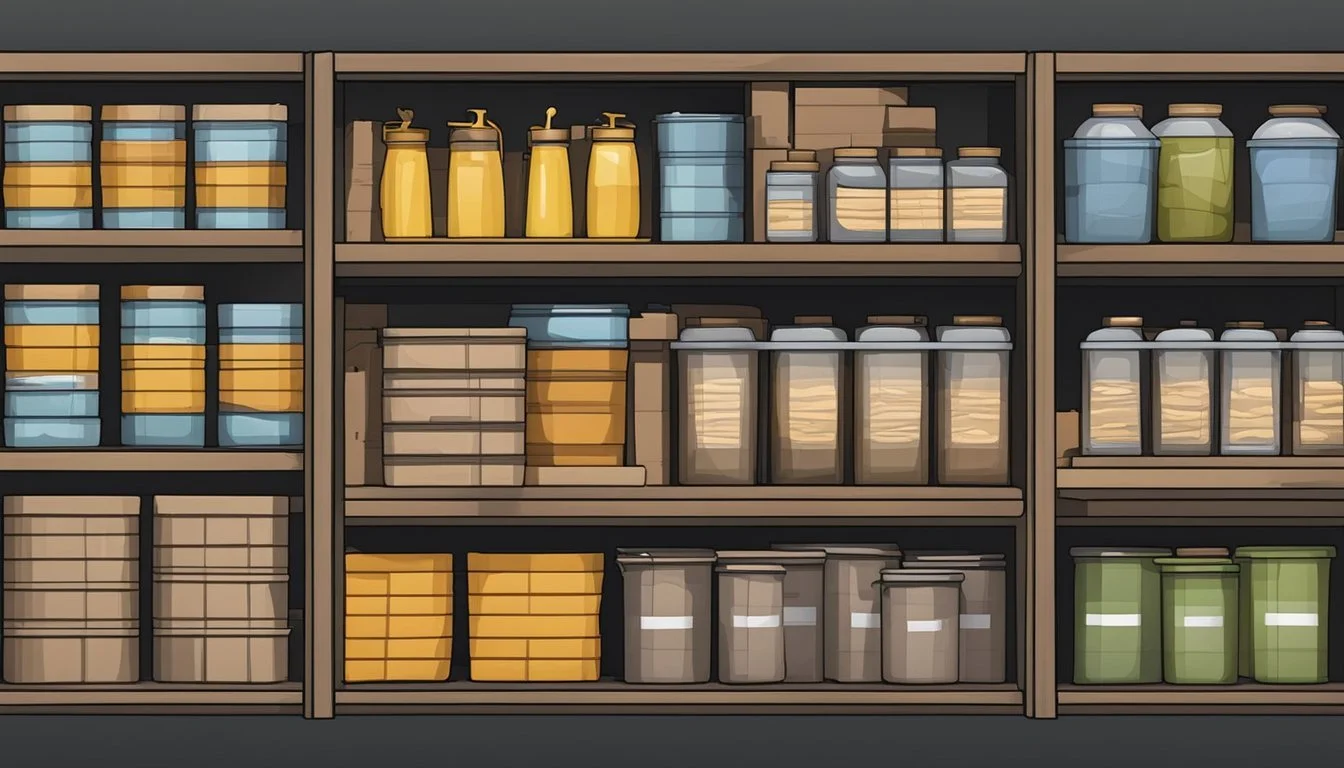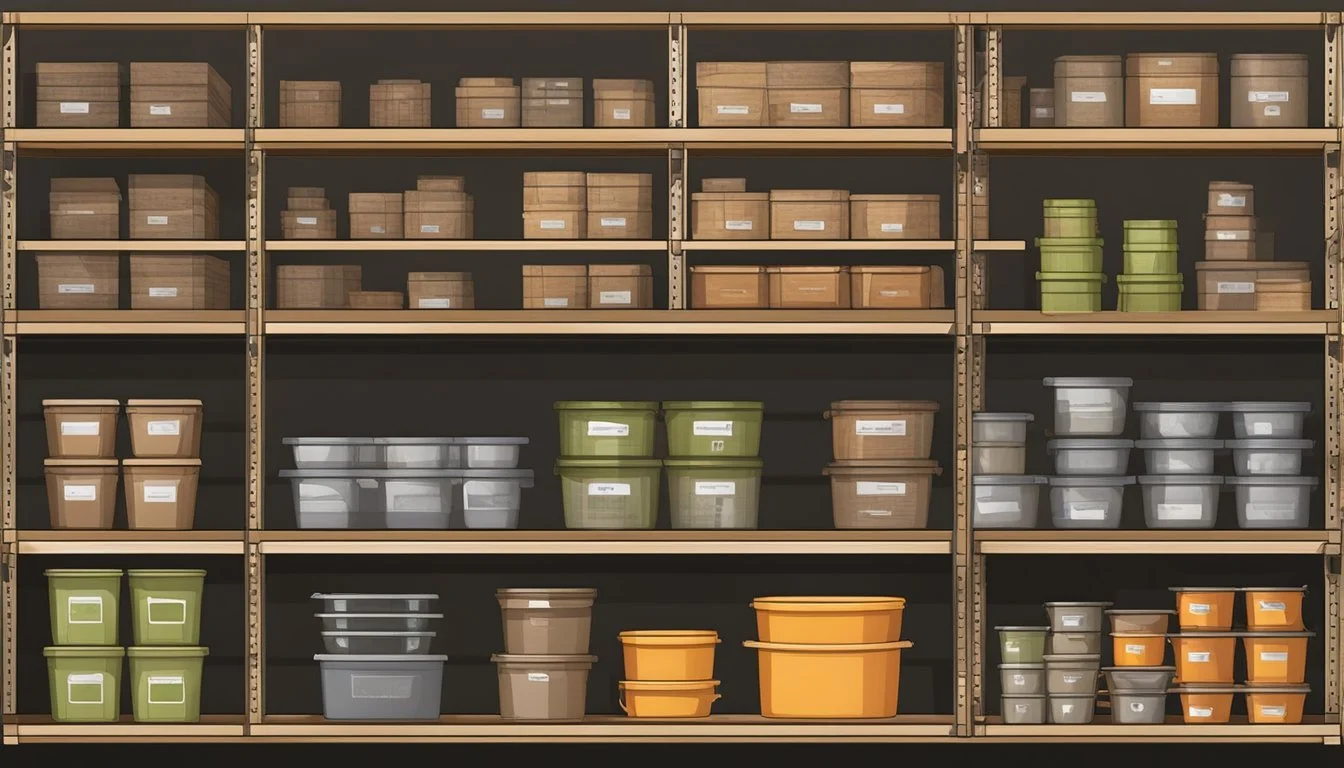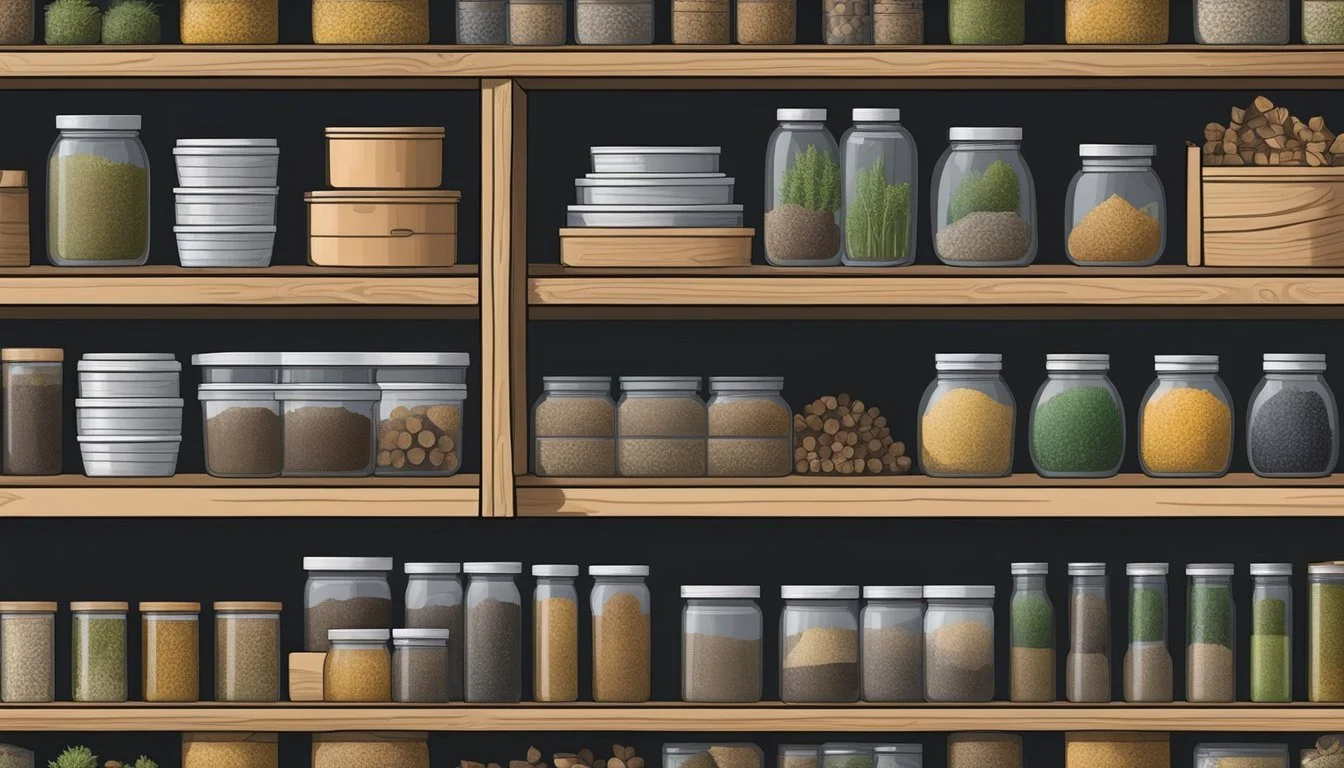The Ultimate Guide to Scion Wood Storage
Effective Techniques for Homestead Grafting Preservation
Scion wood is the key component in the propagation of new fruit trees through grafting, and its preservation is crucial for successful homestead orcharding. To ensure viable grafts, homesteaders must select and store scion wood carefully, with attention to maintaining the appropriate moisture content and preventing both desiccation and rot. The wood should ideally be collected from the previous year's growth and should be straight with plenty of vegetative buds, which are essential for the scion to develop into a healthy graft.
Storing scion wood requires creating an environment that simulates winter dormancy, keeping the wood just above freezing temperature without allowing it to dry out or freeze. This is typically accomplished by wrapping the scion wood in damp materials, such as moss or paper towels, and sealing it inside a plastic bag before placing it in the refrigerator. Maintaining this balance helps ensure that the scion wood remains in a state of suspended animation, ready to be brought to life once it is grafted onto a compatible rootstock when the growing season begins.
Homesteaders need to be aware of the characteristics of the specific species they are working with, as these can influence the selection and storage processes. Techniques and considerations can vary, but the fundamentals of scion wood preparation stand as the foundation for a thriving orchard. Through proper storage, homesteaders preserve not only the grafting material but also the future of their fruit varieties and the biodiversity of their homesteads.
Understanding Scion Wood
Scion wood is the key component in grafting, a horticultural technique where a section of a stem from one tree is joined to the stock of another. The scion is the upper part of the graft that becomes the new growth, producing the desired fruit of specific varieties.
When selecting scions, one should opt for disease-free growth from the previous season. Desirable attributes include wood that is 0.25 to 0.5 inches in diameter and has abundant vegetative buds. The wood must be straight and healthy, ensuring the best results when grafted to rootstocks.
For those with orchards, scion wood offers an opportunity to expand or maintain their variety of fruit trees, such as apple, peach, plums, and pears. The scion should be genetically identical to the mother tree, enabling propagation of true-to-variety fruit.
To identify potential scion wood, look for branches that fit the following criteria:
Younger, one-year-old growth with clear bark.
No signs of disease, damage, or pest infestation.
Preferably, the middle segment of a longer shoot for optimal vigour.
Scion wood should be collected during the tree's dormant season, generally from late winter to early spring, and before the buds begin to swell. Proper identification and handling of scion wood are pivotal for successful grafting, as the quality of the scion contributes significantly to the success rate of the graft taking and the future health of the tree.
The Science of Scion Dormancy
In the realm of homesteading and grafting, understanding the dormant phase and the physiology of dormant scions are pivotal for preserving the viability of grafting material.
Dormant Phase and Scion Selection
When dealing with scion wood, selection should occur during the dormant phase, typically in winter. This ensures that the dormant buds, which have not yet activated for the growing season, are at the right state for storage and subsequent grafting. Proper scion wood appears healthy and free from damage, with a preference for straight segments that exhibit numerous vegetative buds. These buds are narrow and are distinct from spurs which are related to fruiting. The ideal diameter for scion wood ranges from 0.25 to 0.5 inches, allowing for easier manipulation and a better chance of grafting success.
Physiology of Dormant Scions
Dormancy in plants like those used for scion wood is a survival strategy to overcome adverse winter conditions. During this period, dormant buds undergo physiological changes that reduce metabolic activity and prepare them to withstand cold temperatures. It's important to maintain this dormancy. Exposure to warmth or the onset of spring can trigger bud break, which is indicated by swelling or green tissue at the bud site, signaling an end to dormancy. Once this occurs, the scion's capacity to be effectively grafted diminishes significantly. Maintaining just above freezing temperatures and using slightly moist materials like moss or sawdust can help preserve this dormant state during storage.
Preparing Scions for Storage
Proper preparation of scion wood is crucial to maintaining its viability for grafting. The subsequent steps involve selecting the best shoots, employing precise cutting techniques, and effective labeling for organization.
Selecting Quality Scion Wood
When choosing scion wood, one should target healthy shoots from the previous year's growth. Ideal candidates should have a diameter of about 1/4 to 1/2 inch—roughly the thickness of a pencil. They should be free of damage, disease, and discoloration. Vibrant shoots with several well-spaced buds are indicative of quality scion wood, essential for successful grafting.
Scion Wood Cutting Techniques
Cutting should be done with sterilized, sharp tools to create clean cuts that enhance graft compatibility and healing. Each scion typically consists of 2-4 buds. Make a straight cut at the bottom just below a bud, and a diagonal cut at the top above a bud, to distinguish top from bottom. This is particularly important for species like grapes and kiwifruit, where orientation is key.
Labeling and Organizing Scions
Once cut, scions should be immediately labeled to prevent mix-ups. Use a waterproof marker to write on labels of durable material like white or yellow plastic. The label should include the variety and the date of cutting. Organize the labeled scions in a manner that prevents them from touching each other, to reduce the risk of fungal growth during storage.
Scion Wood Storage Conditions
Effective storage of scion wood is crucial in maintaining its viability for grafting. One must balance temperature and humidity to prevent rot and desiccation, ensuring the stored carbohydrates and water within the scion wood remain conducive to future growth.
Ideal Temperature and Humidity
For optimal storage conditions, scion wood should be kept at temperatures between 34 and 45 degrees Fahrenheit. Humidity is equally important, and maintaining it at a level that supports the wood's moisture without promoting fungal growth is essential. These conditions mirror the wood's natural dormant state, helping to preserve its vitality.
Preventing Desiccation and Rot
Scion wood is prone to losing moisture, leading to desiccation, as well as absorbing excess moisture, which can cause rot. To combat these issues, one should:
Wrap scion wood in slightly damp, but not wet, paper towels to maintain moisture.
Store the wrapped wood inside sealed plastic bags, allowing for some air exchange without letting the wood dry out.
It is critical to check scion wood periodically for signs of drying out or mold formation, adjusting the storage conditions as necessary.
Using Refrigerators for Storage
Refrigerators provide a controlled environment that can be easily monitored and adjusted for storing scion wood. The fridge should be set within the ideal temperature range and should not be used for freezing the wood, as extreme cold can damage the tissue. To utilize a refrigerator for scion wood storage effectively, one should:
Avoid storing scion wood near fruits and vegetables that emit ethylene gas, as this can trigger growth processes.
Place the plastic bags containing scion wood in a dedicated refrigerator drawer or on a shelf where temperatures remain consistent.
Storage Methods and Materials
Effective scion wood storage is essential for maintaining the viability of grafting materials. Proper techniques and materials can prevent desiccation and decay of scion wood until it is ready for use.
Polyethylene Bags and Wrapping
For successful storage, one should use polyethylene bags to maintain moisture levels without inducing rot. Scion wood should initially be wrapped in lightly moistened paper towels or wood shavings to preserve its internal moisture. The wrapped scions are then placed inside polyethylene bags, which are sealed to prevent excessive moisture loss. It is crucial that the bags are not completely airtight as a small amount of air exchange is necessary to prevent mold growth.
Using the Freezer for Long-Term Storage
Contrary to common belief, freezers are not suitable for storing scion wood as extreme cold can damage living tissue. Instead, scion wood should be kept just above freezing – typical fridge temperatures of 34 to 45 degrees F are ideal. If stored in a cold basement or garage, one must ensure the location is frost-free. Scion wood placed in these conditions may last for up to 3-4 months; however, one must inspect the wood periodically for signs of budding, which indicates that it should no longer be used for grafting.
Timing and Duration of Storage
Proper timing and duration are critical in ensuring scion wood remains viable for successful grafting. The homesteader must understand the ideal periods for collection and storage limits to preserve the quality of their grafting material.
Best Times to Collect Scion Wood
Scion wood should be collected while the tree is in a dormant state, characteristically during the colder months when trees have ceased active growth. Ideally, this occurs in late winter to early spring, just before the buds begin to swell but after the threat of extreme cold has passed. In many regions, this can be as early as February or as late as early March. The wood collected in this period is from the previous summer’s growth and is typically the most vigorous and suitable for grafting in spring.
How Long to Store Scion Wood Before Grafting
Once the scion wood is collected, storage should be in a cool and moist environment to prevent dehydration or rot. A precise balance in moisture levels is critical. Scion wood can typically be stored for about 3 to 4 months, maintaining a temperature range between 34 and 45 degrees F. It is pivotal not to freeze the scion wood as extreme temperatures can damage the wood and compromise grafting success. Storage should lead up to the prospective spring grafting, securing the material's readiness and condition for the anticipated grafting season.
Grafting Techniques for Stored Scion Wood
Once scion wood is appropriately stored and ready for use, the success of grafting depends on the technique applied. The homesteader's skill in preparing the grafting cuts and ensuring a snug union of the cambium layers significantly impact the graft's take-rate. Below are specific methods tailored for use with stored scion wood.
Cleft Grafting
Cleft grafting is best employed when the rootstock is considerably thicker than the scion wood. The process involves:
Making a clean split (cleft) in the rootstock, no more than 2 to 3 inches deep.
Carefully preparing the scion by creating a wedge at the base.
Inserting the scion into the cleft of the rootstock so that the cambium layers align.
Securing the graft and sealing against moisture and pests.
Whip and Tongue Grafting
This technique is ideal when the scion and rootstock are of similar diameters. Whip and tongue grafting includes the following steps:
Matching the diameters of both scion and rootstock helps ensure cambium alignment.
Making a sloping cut on both scion and rootstock to create a 'whip'
Adding a second cut, or 'tongue', in both pieces to lock them together.
Binding the graft securely and applying a grafting sealant.
Bark Grafting
Bark grafting is valuable when grafting onto large rootstocks and trunks. This method involves:
Selecting a healthy section of the tree's trunk or branch and removing any rough bark.
Making a T-shaped cut in the bark and gently easing it open.
Inserting the scion which has been cut to a wedge shape, between the bark and wood.
Using a small nail or tie to secure the scion in place and then sealing the graft.
These grafting techniques, when applied accurately and with precision, can effectively utilize stored scion wood to promote new growth and abundant harvests in homesteading initiatives.
Post-Storage Scion Wood Care
Proper care after removing scion wood from storage is critical to ensure the best chances of successful grafting. Scions require rehydration and a viability check before they can be grafted onto rootstock.
Rehydrating Scions Before Grafting
Scions tend to lose moisture during storage, which can adversely affect grafting success. Before grafting, it's important to rehydrate the scions to revive the cambium layers which play a crucial role in the formation of the graft union.
Submerge the scion wood: Immerse the scions in water for 12 to 24 hours before grafting.
Avoid over-soaking: Prolonged submersion can cause damage, so limit soaking to a maximum of 24 hours.
Use clean water: Ensure the water is clean to prevent the introduction of pathogens.
Checking for Viability
After rehydration, a viability test is necessary to ensure the buds and cambium are alive and capable of successful grafting.
Visual Inspection: Look for buds that are plump and show no signs of shriveling or discoloration.
Cut Test: Make a slight cut into a bud or the cambium. Viable wood will exhibit green and moist cambium layers; brown and dry layers indicate poor viability.
By rehydrating scion wood and checking for viability, one can increase the likelihood of a healthy graft union and robust growth in the grafting process.
Troubleshooting Common Storage Issues
Scion wood storage is crucial for maintaining viable grafting material, but growers often face issues such as mold and rot, or desiccation. Understanding how to address these concerns can lead to healthier scion wood and more successful grafts.
Dealing with Mold and Disease
Mold can occur if scion wood is stored in overly moist conditions. To prevent mold, one should:
Store scion wood in lightly moistened conditions using damp paper towels, avoiding excess moisture.
Inspect regularly for signs of mold or rot and remove affected parts immediately to prevent spread.
Scion wood should be disease-free before storage, as pre-existing infections can exacerbate mold and decay. One should:
Only select healthy, disease-free scion wood.
Ensure the storage environment is clean to minimize the presence of disease-causing organisms.
Addressing Scion Wood Desiccation Issues
Desiccation is the process where scion wood loses too much moisture and dries out, leading to poor graft results. To combat desiccation, it's recommended to:
Dip cut ends in wax to seal them, reducing moisture loss.
Store the scion wood in a controlled environment, ideally between 34-45 degrees F (1-7 degrees C) to maintain optimal moisture levels.
One should not store scion wood in areas with wide temperature fluctuations. Keeping the wood in a stable and cold environment such as a shed or unheated basement can reduce the risk of desiccation.
Scion Wood Transportation and Sharing
When sharing scion wood for grafting, careful packaging and maintaining its viability during mail transit are crucial. These steps ensure that the quality and potential for successful grafting are preserved when the scion wood reaches its destination.
Packaging Scion Wood for Mail
For mailing scion wood, it's important to select healthy and disease-free wood. Scion wood should be cut to lengths that comfortably fit within the shipping container, usually plastic bags or tubes. The cut ends of the wood can be sealed with wax to prevent drying. To retain moisture, wrap the scions in lightly moistened paper towels or include wood shavings in the package without saturating them, as excess moisture promotes mold growth.
Steps for Packaging:
Cut scion wood to suitable lengths.
Seal the ends with wax.
Wrap in slightly moist paper towels.
Place in a plastic bag or tube with breathing holes.
Maintaining Viability During Transit
During transportation, maintaining a proper moisture balance is essential to prevent the scionwood from drying out or rotting. The package should be kept at a stable temperature, ideally between 34 and 45 degrees Fahrenheit, which often means using insulation materials during shipping. It is also critical that the package is labeled clearly to ensure careful handling.
To preserve scionwood nutrients and viability:
Avoid storing scion wood in environments that are too wet or too dry.
If using a refrigerated method, ensure the temperature mimics cold room conditions.
Consider the estimated transit time and adjust packaging methods accordingly.
Through careful planning and execution, sharing scion wood via mail can be a successful undertaking that contributes to the diversity and sustainability of homesteading projects.
Advanced Considerations
In the realm of homesteading, the storage of scion wood taps into the deep cultural roots of grafting and opens the door to a world of horticultural exploration. As practitioners delve into advanced considerations, they encounter the longstanding traditions and potential for cultivating novel fruit varieties.
Cultural Significance of Grafting
Grafting is not just a horticultural technique; it is steeped in cultural heritage, shaping the identity of certain fruits within regions. Apples, for example, have been a staple in American and European cultures, with specific varieties signifying tradition and heritage. Preserving scion wood from these legacy trees is akin to safeguarding a piece of cultural history. In Asian cultures, various pear varieties hold prominent roles in festivals and culinary traditions, and their continuation through grafting reflects a respect for generations past.
Experimenting with Unusual Fruit Varieties
Scion wood storage is a gateway for homesteaders to experiment with unusual fruit varieties that might not be readily available in their local nurseries or seed banks. By exploring diverse types of scion wood, such as rare peaches or novel apple hybrids, they can expand their orchard's biodiversity and contribute to a sustainable food resource. Homesteaders are encouraged to maintain records of their grafting results, including:
Success rate of grafts
Growth patterns
Fruit quality assessments
Experimenting allows for the potential discovery of new fruit types that can thrive in specific climates, broadening the scope of sustainable and locally-grown produce.
Conclusion
Proper storage of scion wood is an integral part of successful grafting. Homesteaders must ensure that scion wood maintains its viability by balancing moisture and temperature conditions adequately. Wood should be wrapped in damp materials such as moss or paper towels to retain moisture but not promote rot. It is then best stored in sealed plastic bags to create a stable environment.
Key Points to remember for optimal scion wood storage:
Scion wood should be straight with numerous vegetative buds and a diameter between 0.25 and 0.5 inches.
Store the wood in a cool, dark place with temperatures ideally between 34 and 45 degrees Fahrenheit.
Avoid freezing temperatures as well as places with potential for high temperature fluctuations, such as near heating systems.
Regular monitoring of the scions is necessary to check for signs of drying out or unwanted growth.
By adhering to these simple yet precise guidelines, homesteaders can ensure that their scion wood remains in peak condition until the opportune moment for grafting arrives. Careful storage not only preserves the quality of the scions but also increases the likelihood of a successful graft and promotes the future health of fruit trees.










